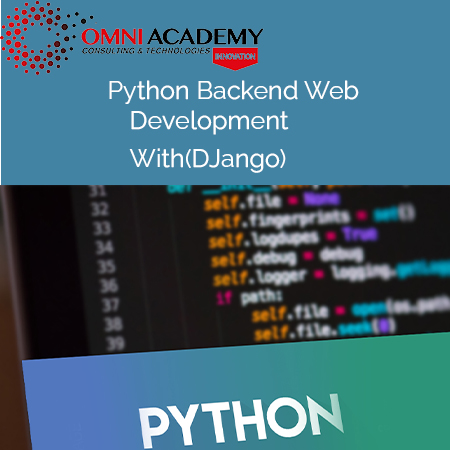Network Monitoring and Threat Detection In-Depth
Network Monitoring and Threat Detection In-Depth delivers the technical knowledge, insight, and hands-on training you need to confidently defend your network, whether traditional or cloud-based. You will learn about the underlying theory of TCP/IP and the most used application protocols so that you can intelligently examine network traffic to identify emerging threats, perform large-scale correlation for threat hunting, and reconstruct network attacks. (Online classes available)
Course Key Learnings:
- How to analyze traffic traversing your site to avoid becoming another headline
- How to identify zero-day threats for which no network monitoring tool has published signatures
- How to place, customize, and tune your network monitoring for maximum detection
- How to triage network alerts, especially during an incident
- How to reconstruct events to determine what happened, when, and who did it
- Hands-on detection, analysis, and network forensic investigation with a variety of tools
- TCP/IP and common application protocols to gain insight about your network traffic, enabling you to distinguish normal from abnormal traffic
- The benefits and problems inherent in using signature-based network monitoring tools
- The power of behavioral network monitoring tools for enterprise-wide automated correlation, and how to use them effectively
- How to perform effective threat modeling for network activities
- How to translate threat modeling into detection capabilities for zero-day threats
- How to use flow and hybrid traffic analysis frameworks to augment detection in traditional, hybrid, and cloud network environment
BUSINESS TAKEAWAYS:
This course will help your organization:
- Avoid your organization becoming another front page headline
- Augment detection in traditional, hybrid, and cloud network environments
- Increase efficiency in threat modeling for network activities
- Decrease attacker dwell time
Course Content: Module1: Network Monitoring and Analysis: Part I
Overview
Section 1 begins our bottom-up coverage of the TCP/IP protocol stack, providing deep coverage of TCP/IP to prepare you to better monitor and find threats in your cloud or traditional infrastructure. This is the first step in what we think of as a “Packets as a Second Language” course. After the importance of collecting the packets used in zero-day and other attacks has been established, students are immediately immersed in low-level packet analysis to identify threats and identify TTPs. This section covers the essential foundations such as the TCP/IP communication model, theory of bits, bytes, binary and hexadecimal, and the meaning and expected behavior of every field in the IP header. Students are introduced to the use of open-source Wireshark and tcpdump tools for traffic analysis.
All traffic is discussed and displayed using both Wireshark and tcpdump, with the pros and cons of each tool explained and demonstrated. Students can follow along with the instructor viewing the sample traffic capture files supplied. Multiple hands-on exercises after each major topic provide students with the opportunity to reinforce what was just learned. The section ends with hands-on application of all concepts with real-world traffic from an incident in a Bootcamp-style activity.
Topics
Concepts of TCP/IP
- Why is it necessary to understand packet headers and data?
- The TCP/IP communications model
- Data encapsulation/de-encapsulation
- Bits, bytes, binary, and hex
Introduction to Wireshark
- Navigating around Wireshark
- Wireshark profiles
- Examination of Wireshark statistics options
- Stream reassembly
- Finding content in packets
Network Access/Link Layer: Layer 2
- Introduction to the link layer
- Addressing resolution protocol
- Layer 2 attacks and defenses
IP Layer: Layer 3
- IPv4
- Examination of fields in theory and practice
- Checksums and their importance, especially for network monitoring and evasion
- Fragmentation: IP header fields involved in fragmentation, composition of the fragments, modern fragmentation attacks
UNIX Command Line Processing
- Processing packets efficiently
- Parsing and aggregating data to answer questions and research a network
- Using regular expressions for faster analysis
Module: Network Monitoring and Analysis: Part II
Overview
Section 2 completes the “Packets as a Second Language” portion of this course and lays the foundation for the much deeper discussions to come. Students will gain a deep understanding of the primary transport layer protocols used in the TCP/IP model, in addition to the modern trends that are changing how these protocols are used. We’ll explore two essential tools, Wireshark and tcpdump, using advanced features to give you the skills to analyze your own traffic. The focus is on filtering large-scale data down to traffic of interest in order to identify threats in both traditional and cloud-based infrastructure using Wireshark display filters and tcpdump Berkeley Packet Filters. These are used in the context of our exploration of the TCP/IP transport layers covering TCP, UDP and ICMP. Once again, we discuss the meaning and expected function of every header field, covering a number of modern innovations that have very serious implications for modern network monitoring. We analyze traffic not just in theory and function but from the perspective of an attacker and defender, allowing us to expand our threat models of modern TTPs at the network level.
Students can follow along with the instructor viewing the sample capture files supplied. Hands-on exercises after each major topic provide students with the opportunity to reinforce what they just learned. The evening Bootcamp material moves students out of the world of theory and into working through its real-world application. Students learn the practical mechanics of command line data manipulation that is invaluable for packet analysis during an incident and also useful in many other information security and information technology roles. We’ll also cover useful techniques to understand what systems are on a cloud or traditional network, how they are communicating, and which services are available without performing active scanning.
Topics
Wireshark Display Filters
- Examination of some of the many ways that Wireshark facilitates creating display filters
- Composition of display filters
Writing BPF Filters
- The ubiquity of BPF and utility of filters
- Format of BPF filters
- Use of bit masking
TCP
- Examination of fields in theory and practice
- Packet dissection
- Checksums
- Normal and abnormal TCP stimulus and response
- Importance of TCP reassembly for IDS/IPS
UDP
- Examination of fields in theory and practice
- UDP stimulus and response
ICMP
- Examination of fields in theory and practice
- When ICMP messages should not be sent
- Use in mapping and reconnaissance
- Normal ICMP
- Malicious ICMP
IP6
- Fundamentals
- Improvements over IP6
- Multicast protocols and how they are leveraged by IP6
- IP6 threats
Real-world application: Researching a network
- Who are the top talkers?
- What are people connecting to?
- What services are running on our network?
- What kind of east-west traffic is present?
Module3: Signature-Based Threat Detection and Response
Overview
Section 3 builds on the foundation of the first two sections of the course, moving into the world of application layer protocols. Using this knowledge, we dive into the state-of-the-art detection mechanisms for threat detection used in cloud, endpoint, hybrid-network, and traditional infrastructure. Students are introduced to the versatile packet crafting tool Scapy, a very powerful Python-based tool that allows for the manipulation, creation, reading and writing of packets. Scapy can be used to craft packets to test the detection capability of any monitoring tool or next-generation firewall. This is especially important when a new user-created network monitoring rule is added, for instance for a recently announced vulnerability. Various practical scenarios and uses for Scapy are provided throughout the course.
The overall focus of the section is on using Snort (or Cisco FirePOWER) and/or Suricata and learning to write efficient and effective rules. After introducing some rule-writing basics, the balance of the section introduces more and more features of these threat detection tools while exploring capabilities and deficiencies in the context of some of the most widely used, and sometimes vulnerable, application protocols: DNS, HTTP(S), HTTP2, HTTP3, and Microsoft communications. The focus is on protocol analysis, a key skill in network monitoring, threat detection, and network forensics. Additional Wireshark capabilities are explored in the context of incident investigation and forensic reconstruction of events based on indicators in traffic data.
The course section ends with a discussion of QUIC and how to research any new protocol, followed by a hands- application of the Snort and Suricata skills developed throughout the section as students triage alerts from real-world data.
Topics
Scapy
- Packet crafting and analysis using Scapy
- Writing packets to the network or a pcap file
- Reading packets from the network or from a pcap file
- Practical Scapy uses for network analysis and network defenders
Advanced Wireshark
- Exporting web and other supported objects
- Extracting arbitrary application content
- Wireshark investigation of an incident
- Practical Wireshark uses for analyzing SMB protocol activity
- Tshark
Introduction to Snort/Suricata
- Configuration of the tools and basic logging
- Writing simple rules
- Using common options
Effective Snort/Suricata
- More advanced content on writing truly efficient rules for very large networks
- Understanding how to write flexible rules that are not easily bypassed or evaded
- Snort/Suricata “Choose Your Own Adventure ” approach to all hands-on activities
- Progressive examination of an evolving exploit, incrementally improving a rule to detect all forms of the attack
- Application of Snort/Suricata to application layer protocols
DNS
- DNS architecture and function
- DNSSEC
- Modern advances in DNS, such as EDNS (Extended DNS)
- Malicious DNS, including cache poisoning
- Creating rules to identify DNS threat activities
Microsoft Protocols
- SMB/CIFS
- Detection challenges
- Practical Wireshark application
Modern HTTP
- Protocol format
- Why and how this protocol is evolving
- Detection challenges
- Changes with HTTP2 and HTTP3
How to Research a Protocol
- Using QUIC as a case study
- Comparison of GQUIC vs. IETF QUIC
Real-world Application: Identifying Traffic of Interest
- Finding anomalous application data within large packet repositories
- Extraction of relevant records
- Application research and analysis
Module4: Building Zero-Day Threat Detection Systems
Overview
The fundamental knowledge gained from the first three sections provides the foundation for deep discussions of modern and future network intrusion detection systems during Section 4. Everything that students have learned so far is now synthesized and applied to designing optimized threat detection capabilities that go well beyond what is possible with Snort/FirePower/Suricata and next-generation firewalls through the use of advanced behavioral detection using Zeek (or Corelight).
The section begins with a discussion on network architecture, including the features of general network monitoring, intrusion detection, and intrusion prevention devices, along with options and requirements of devices that can sniff and capture the traffic for inspection. We’ll provide an overview of deployment options that allows students to explore specific deployment considerations that might apply to their respective organizations.
We will then explore TLS, how it has changed, and how to intercept and decrypt the data when necessary, before looking at traffic analytics based on the deep protocol knowledge developed throughout the course to identify and classify network streams that are encrypted and for which we do not have the keys.
The balance of the section is spent introducing Zeek/Corelight, followed by hands-on activities to explore its function and logging capabilities. Basic scripting is introduced, followed by a shift to constructing anomaly-based behavioral detection capabilities using Zeek’s scripting language and a cluster-based approach.
After students gain a basic proficiency in the use of Zeek, the instructor will lead them through a practical threat analysis and threat modeling process that is used as the basis for an extremely powerful correlation script to identify any potential phishing activity within a defended network. Further practical will demonstrate how this approach to behavioral analysis and threat modeling is used to fill the gaps in the signature-based detection paradigm used in industry and create zero-day threat detection capabilities for unknown threats.
The section ends with a discussion of how attackers can evade network monitoring capabilities, including several “zero day” evasion techniques that work against all current network monitoring tools. The Bootcamp material once again will move students out of theory and into practical use in real-world situations. Students will continue to expand their understanding of the developing incident under analysis in preparation for the final day capstone by applying all the techniques learned so far.
Topics
Network Architecture
- Instrumenting the network for traffic collection
- Network monitoring and threat detection deployment strategies
- Hardware to capture traffic
Introduction to Network Monitoring at Scale
- Function of a network monitoring tools
- The analyst’s role in detection
- Analysis flow process
Zeek
- Introduction to Zeek
- Zeek operational modes
- Zeek output logs and how to use them
- Practical threat analysis and threat modeling
- Zeek scripting
- Using Zeek to monitor and correlate related behaviors
IDS/IPS Evasion Theory
- Theory and implications of evasions at different protocol layers
- Sampling of evasions
- Necessity for target-based detection
- Zero-day monitoring evasions
Module5: Large-Scale Threat Detection, Forensics, and Analytics
Overview
This section continues the trend of less formal instruction and more practical application in hands-on exercises. The section covers three major areas, beginning with data-driven, large-scale analysis and collection using NetFlow and IPFIX. With the deep protocol background developed in the first sections of the course, NetFlow becomes an incredibly powerful tool for performing threat hunting in our cloud and traditional infrastructure. After covering the fundamentals, we’ll walk students through more advanced analysis and threat detection using and building custom NetFlow queries. The second area continues the large-scale analysis theme with an introduction to traffic analytics. Various tools and techniques for zero-day threat hunting at the network level are introduced, after which students have the opportunity to put them into practice in hands-on exercises. We’ll also discuss and demonstrate cutting-edge applications of artificial intelligence and machine learning techniques for anomaly detection. The final area involves digging into network forensics and incident reconstruction. Students work through three detailed hands-on incidents, utilizing all of the tools and techniques from the entire course.
Topics
Using Network Flow Records
- NetFlow and IPFIX metadata analysis
- Using SiLK to find events of interest
- Identification of lateral movement via NetFlow data
- Building custom NetFlow queries
Threat Hunting and Visualization
- Various approaches to performing network threat hunting at enterprise scale in networks
- Exercises involving approaches to visualizing network behaviors to identify anomalies
- Applications of data science to streamline security operations and perform threat hunting
- Experimenting with an AI-based system to identify network protocol anomalies on a defended network
Introduction to Network Forensic Analysis
- Theory of network forensics analysis
- Phases of exploitation
- Data-driven analysis versus alert-driven analysis
- Hypothesis-driven visualization
Module6 Advanced Network Monitoring and Threat Detection Capstone
Overview
The course culminates with a hands-on server-based Network Monitoring and Threat Detection capstone that is both fun and challenging. Students compete as solo players or on teams to answer many questions that require using tools and theory covered in the course. The challenge is based on six sections of live-fire real-world data in the context of a time-sensitive incident investigation. It is designed as a “ride-along” event, where students are answering questions based on the analysis that a team of professional analysts performed of these same data.
International Student Fee: 500 US$
- Tough Open-Ended Job Interview Questions
- What to Wear for Best Job Interview Attire
- Job Interview Question- What are You Passionate About?
- How to Prepare for a Job Promotion Interview
Internships, Freelance and Full-Time Work opportunities
Flexible Class Options
- Week End Classes For Professionals SAT | SUN
- Corporate Group Trainings Available
- Online Classes – Live Virtual Class (L.V.C), Online Training
Related Courses
Security Awareness – Managing Human Risk
Leadership Essentials -Security Leadership Essentials for Managers






